On the journey to their new lives in America, 10% of the immigrants who arrived at Ellis Island were detained in its hospital complex. Abandoned since 1954, the complex was opened to the public in 2014 and offers a fascinating glimpse into the past.
The first immigrant to enter the US via Ellis Island when it opened on January 1, 1892, was Annie Moore, an Irish teenager, accompanied by her two younger brothers. Over 12 million immigrants followed in her footsteps in the decades that followed, an estimated 3 million of them Irish.
Read more
But not all who arrived at Ellis Island proceeded swiftly to their new lives in America. Two percent of the hopeful Ellis Island immigrants were deported back to their own countries if they were deemed unfit to journey onwards into America. But deportation was a last resort. More often, immigrants who were sick or thought to be potentially mentally unfit to pass immigration inspection were brought to Ellis Island’s massive hospital complex.
In total, an estimated 10% of Ellis Island immigrants (1.25 million) spent time in the Ellis Island hospital during its operational years from 1901 to 1924. The mortality rate was remarkably low for the time, especially when you consider that antibiotics were not in use, with approximately 3,500 patients dying there during the hospital’s decades of operation.
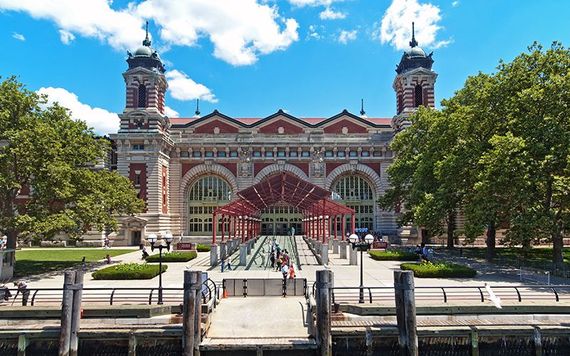
The beautiful Ellis Island, off New York City.
It was a state-of-the-art pavilion-style hospital, spanning 29 buildings, with nurses, doctors, and other staff commuting across New York Harbor by ferry to tend to patients with tuberculosis, scarlet fever, measles, skin infections like favus and ringworm, as well as mental disabilities. Single women who arrived at Ellis Island pregnant were also detained there, and 350 babies were born in the hospital on Ellis Island.
In the late 1920s, it transitioned into use as a psychiatric hospital for soldiers and was then used by the FBI in the 1930s. During WWII, injured soldiers were treated there, and it was used as a detention center and as a base by the Coast Guard until the Coast Guard abandoned Ellis Island entirely in 1954.
While the Registry Hall of Ellis Island was restored and turned into the Immigration Museum it is today, the hospital only began restoration and stabilization efforts in 1990, thanks to the Save Ellis Island non-profit group, which aims to preserve this vital part of Ellis Island history and tell the story of those 10% of Ellis Island immigrants who stayed in the hospital.
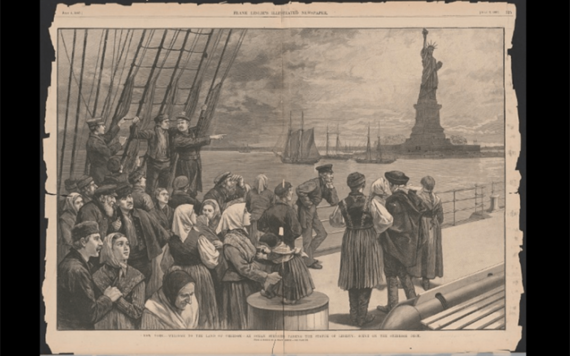
Historic image of immigrants arriving to New York, with a view of the Statue of Liberty.
The hospital complex opened for special hard-hat tours in 2014, featuring a series of stunning installations by the French artist JR, who displayed archival photographs of Ellis Island immigrants throughout the hospital, some in the rooms where those very patients were treated.
Thanks to the urban discovery group Untapped Cities, IrishCentral took a Save Ellis Island hard hat tour of the complex in 2014.
It was a fascinating and eerie experience, walking through the abandoned halls of what was once a state-of-the-art medical facility. Our tour guide was a wealth of knowledge, and his stories combined with the JR installations brought to life the experiences of the immigrants and staff of the hospital. The following are the video and photos I captured during the tour.
Here are some videos and images that give a sense of the building as it remains:
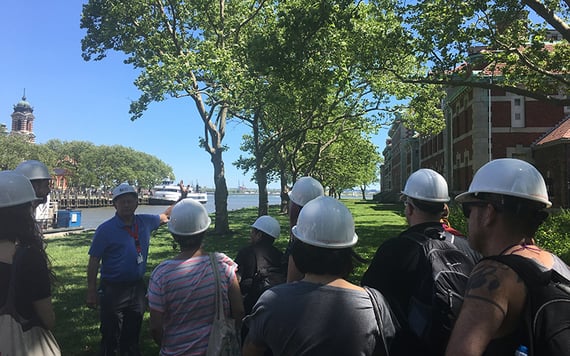
The tour begins. The hospital complex was originally on a separate man-made island which was later connected to Ellis Island as a whole. Photo: Sheila Langan
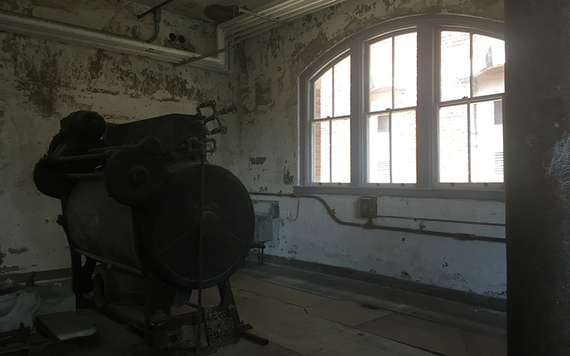
The laundry building. Photo: Sheila Langan
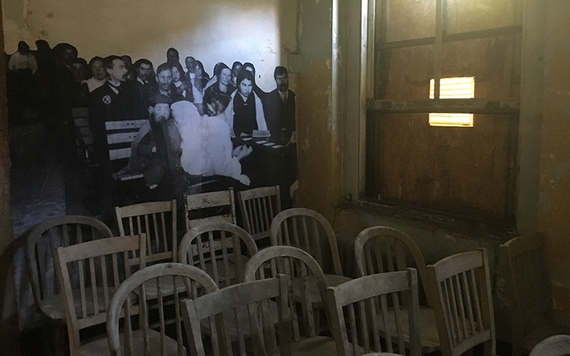
A JR installation inside the hospital. Photo: Sheila Langan
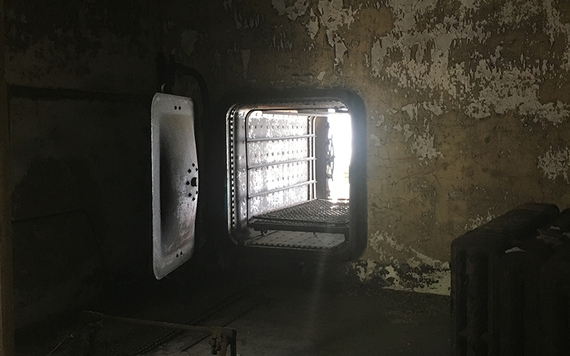
The autoclave, where hospital mattresses and other materials were disinfected. Photo: Sheila Langan
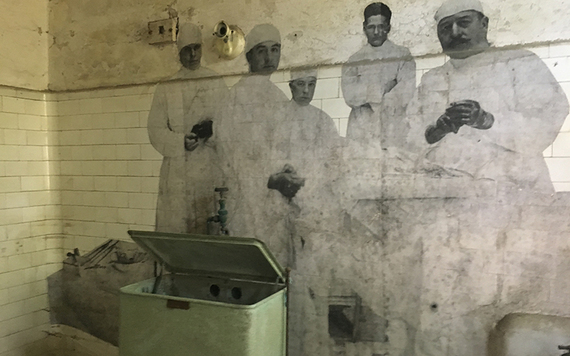
A JR installation of real doctors and surgeons on Ellis Island. Photo: Sheila Langan
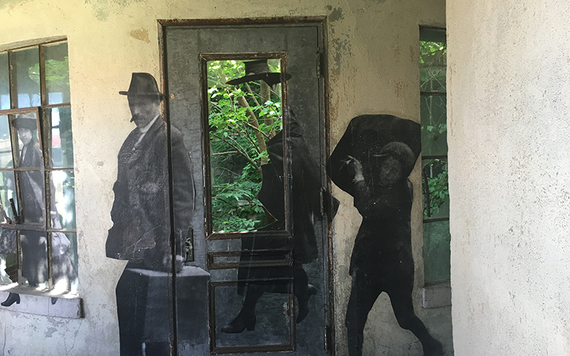
Photo: Sheila Langan
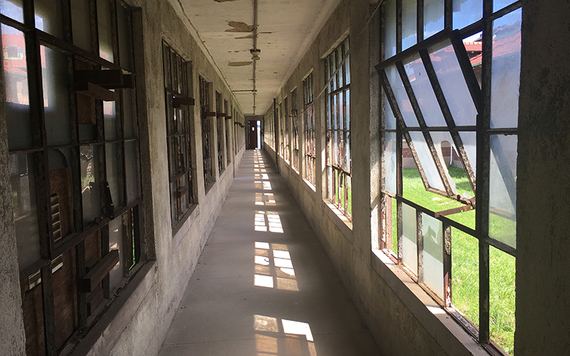
Hospital corridor. Photo: Sheila Langan
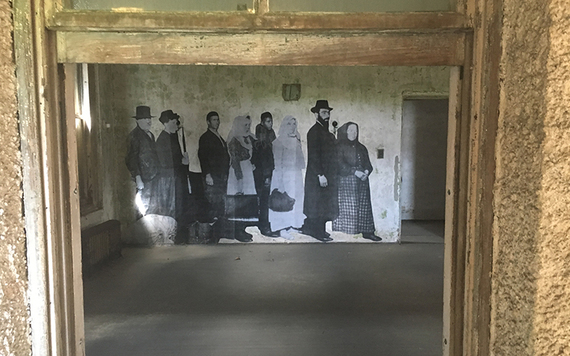
Photo: Sheila Langan
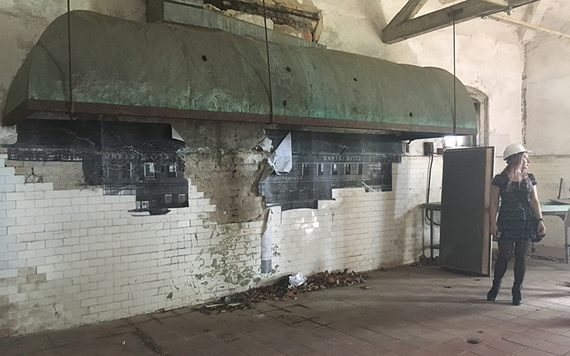
The kitchen. Photo: Sheila Langan
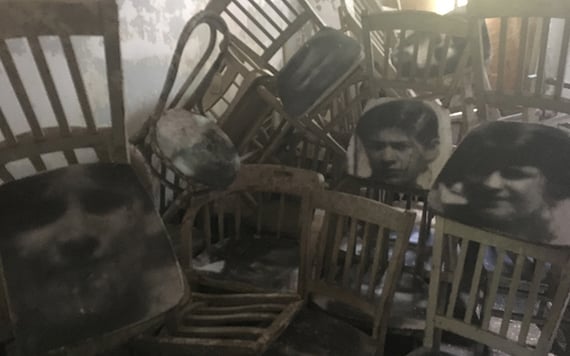
Photo: Sheila Langan
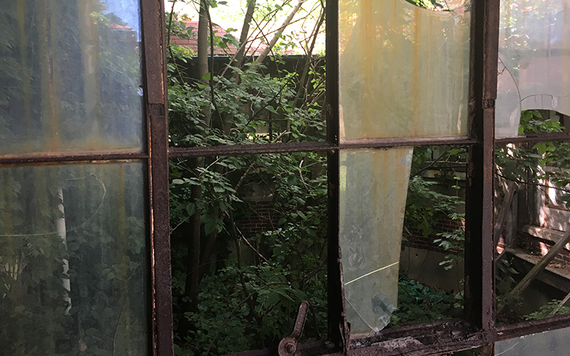
Nature taking over. Photo: Sheila Langan
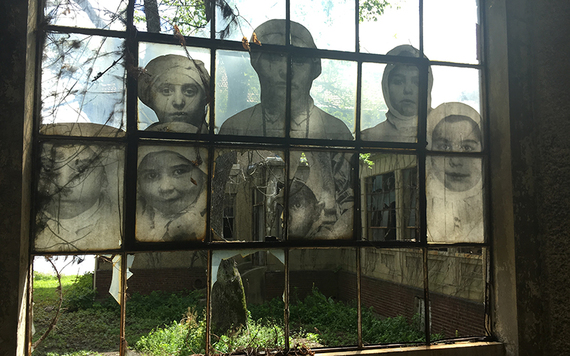
JR installation of children suffering from favus. Photo: Sheila Langan
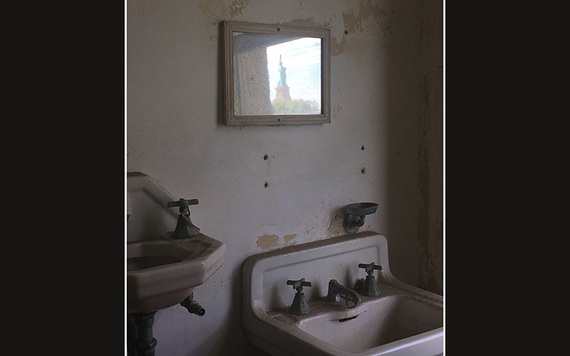
Statue of Liberty seen from a mirror in a room in the contagious disease ward. Photo: Sheila Langan
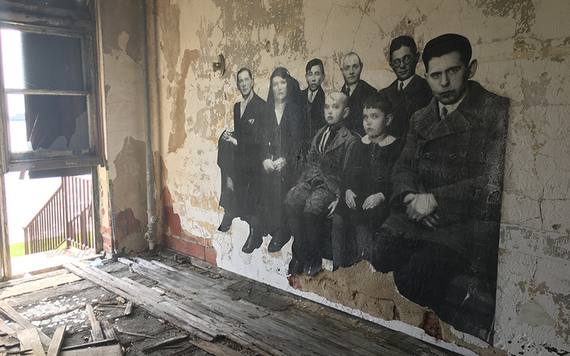
Photo: Sheila Langan
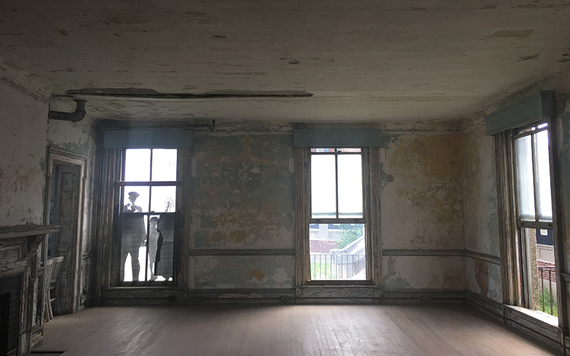
A room in the home for the head physician. Photo: Sheila Langan
* Originally published in July 2017, updated in Nov 2021.

Love Irish history? Share your favorite stories with other history buffs in the IrishCentral History Facebook group.
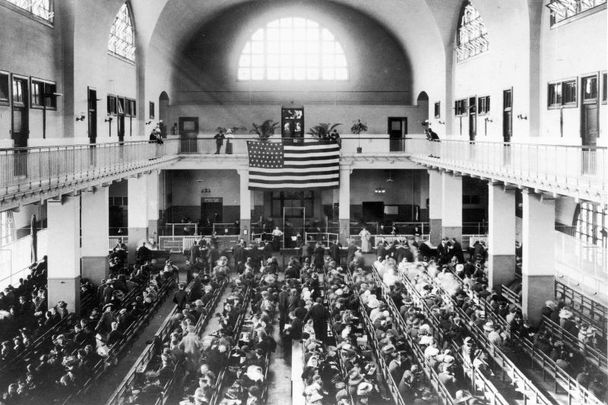
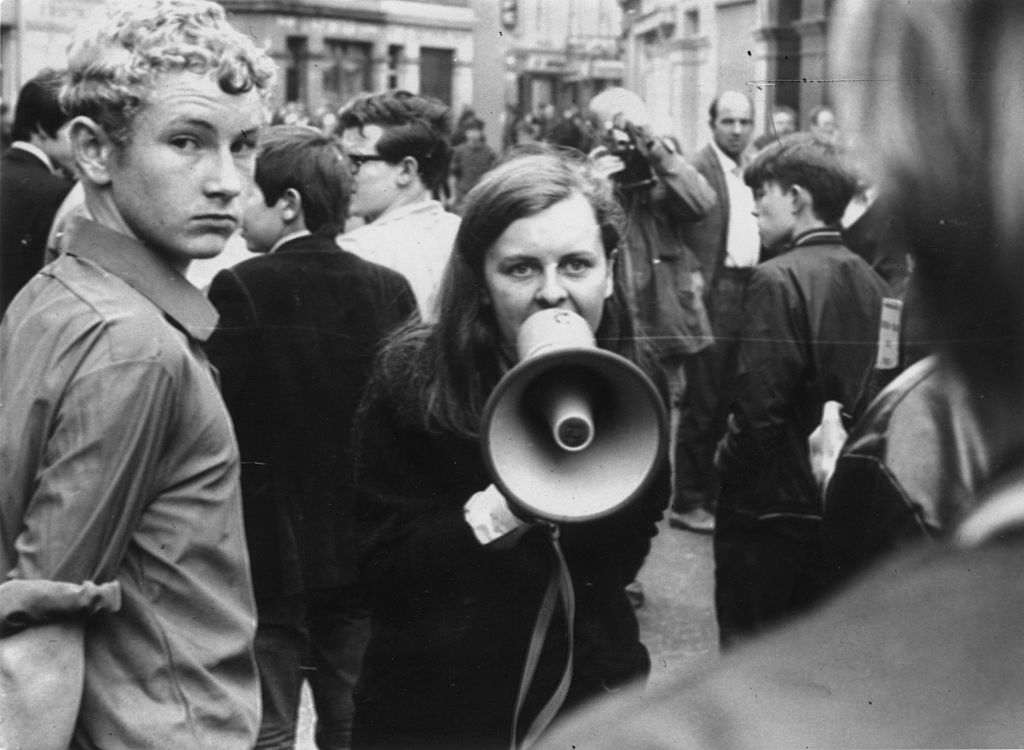
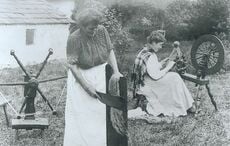

Comments